
The Clef Club Grand March, 1910. Temple University Digital Collections
Excerpt from personal interview with Professor David Gilbert; January 13, 2020




Carnegie Music Hall, 1908. New York Public Library Digital Collections
In the early 1910s, numerous barriers existed that precluded the recognition and advancement of African-American musicians. Racial prejudices severely limited opportunities for black musicians, and establishments commonly hired black entertainers as menial laborers with the expectation of performance for tips.
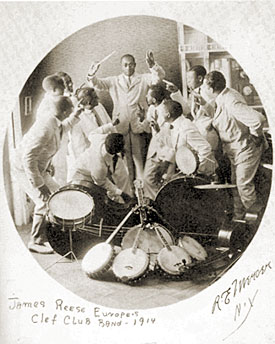
James Reese Europe and the Clef Club Band, 1914. New York Public Library Digital Collections

The Clef Club Grand March, 1910. Temple University Digital Collections
Excerpt from personal interview with Professor David Gilbert; January 13, 2020
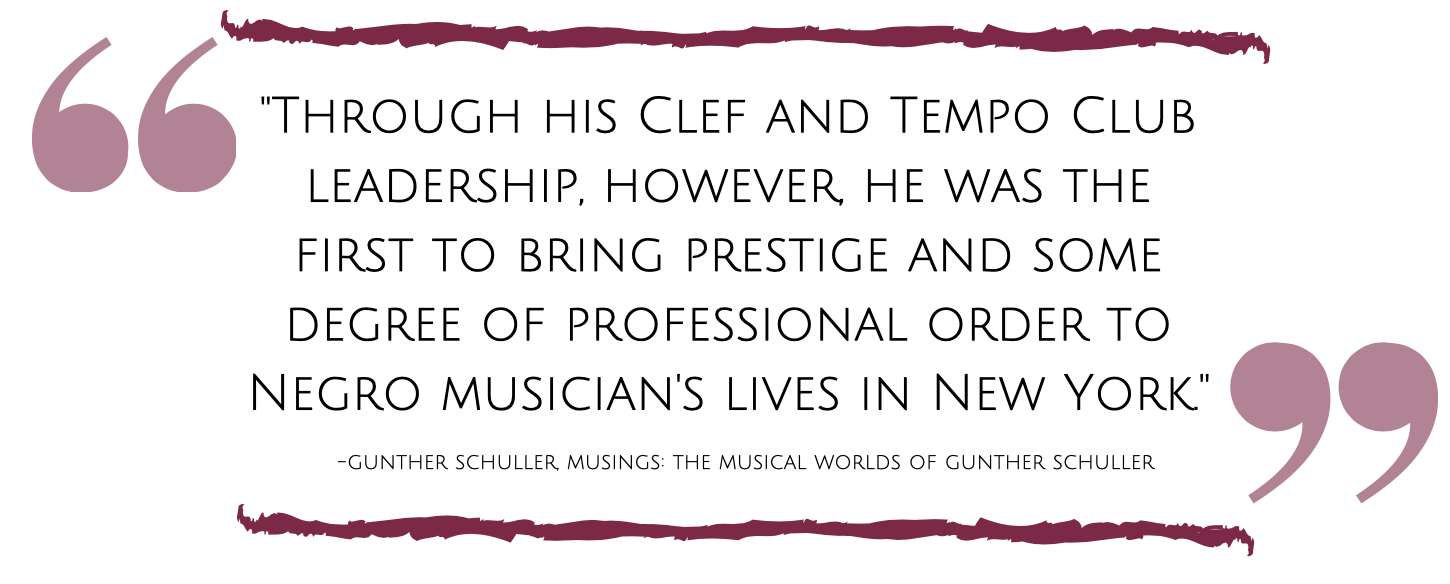
Europe founded the Clef Club of New York City, Inc. on April 11, 1912 and became its first president. The Clef Club was the first labor union for black musicians of popular music in New York City and additionally served as a meeting place for black musicians.

Clef Club with James Reese Europe, 1912. Eubie Blake Collection, Maryland Historical Society
Europe’s connection with the affluent Wanamaker family allowed him to bring his musicians into the homes of Manhattan’s elite. Europe transformed the conditions under which black musicians were hired. He elevated the perception and value of black musicians.
"A society lady called up on the telephone a man who makes a business of supplying musicians, and asked the price for a band of ten men. The man she called up is a colored man and supplies colored musicians, but as his office is on Broadway, such a thought seems not to have been anywhere near the lady's mind. She told her what ten men would have cost for an evening. She was amazed and said to him, 'Why I can get colored musicians for that price.'"
- James Weldon Johnson, 1915
As a result of Europe’s efforts and mounting competition from Clef Club musicians, other unions were forced to desegregate, a move they had previously refused to make.

Jim Europe led the Clef Club Symphony Orchestra at Carnegie Hall on May 2, 1912. This was the first time an African-American ensemble played African-American music in the renowned hall.
" Europe had stormed a bastion of the white cultural musical establishent and made many members of New York's cultural elite aware of Negro Music for the first time."
-Gunther Schuller, Musings: the Musical Worlds of Gunther Schuller
The orchestra performed to a desegregated audience, and received rave reviews.
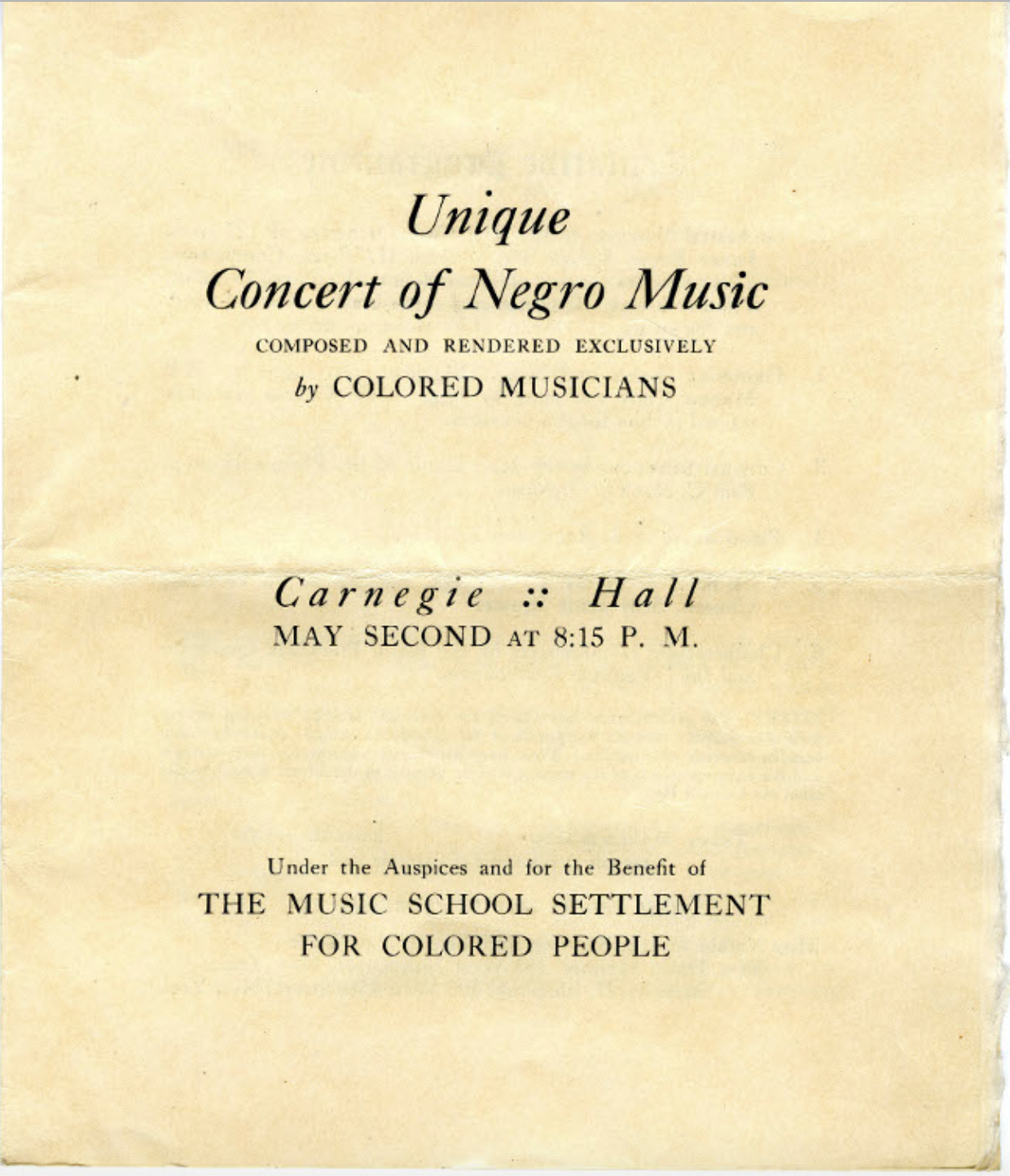
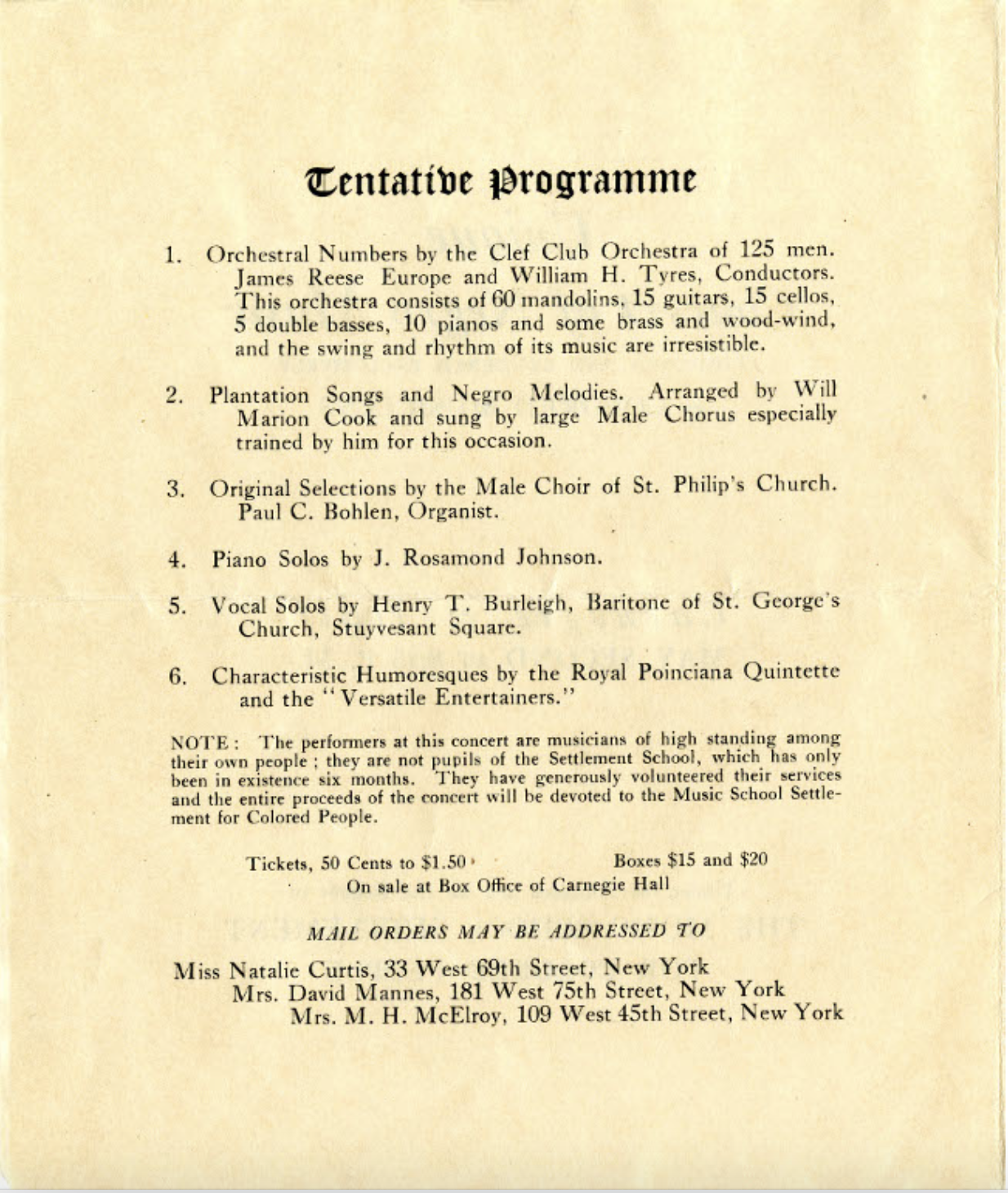
Carnegie Hall program and invitation to a "Concert of Negro Music," presented by the Clef Club, 1912. Carnegie Hall
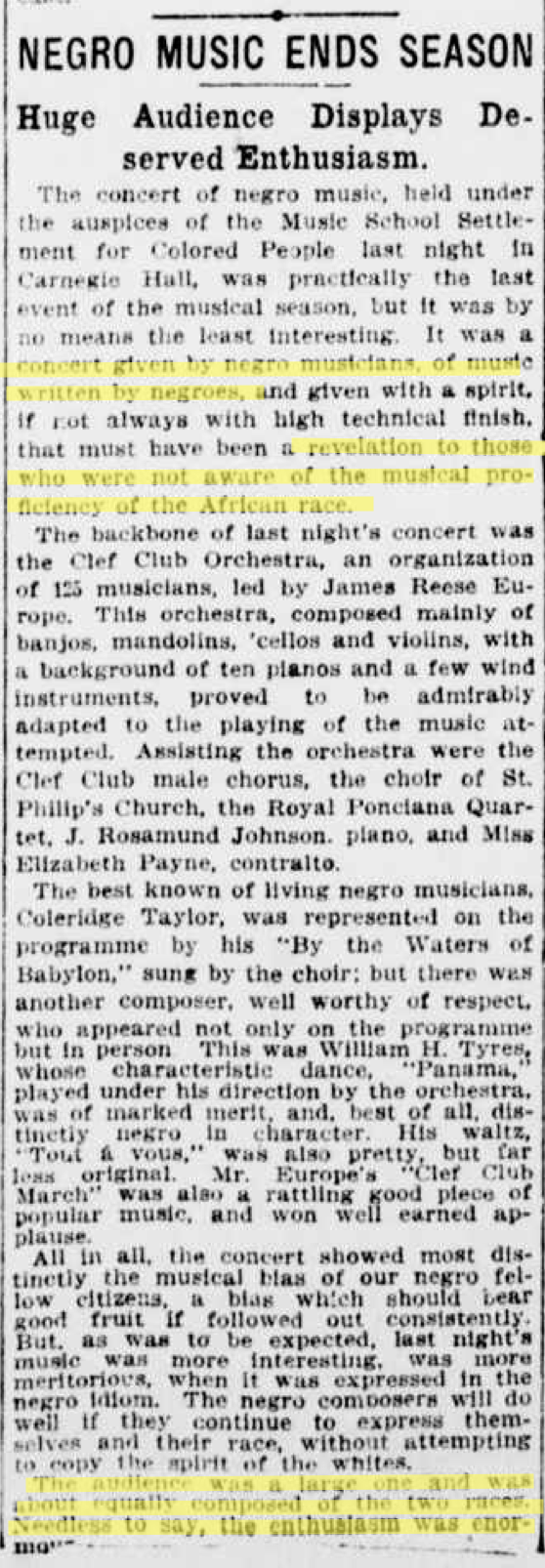

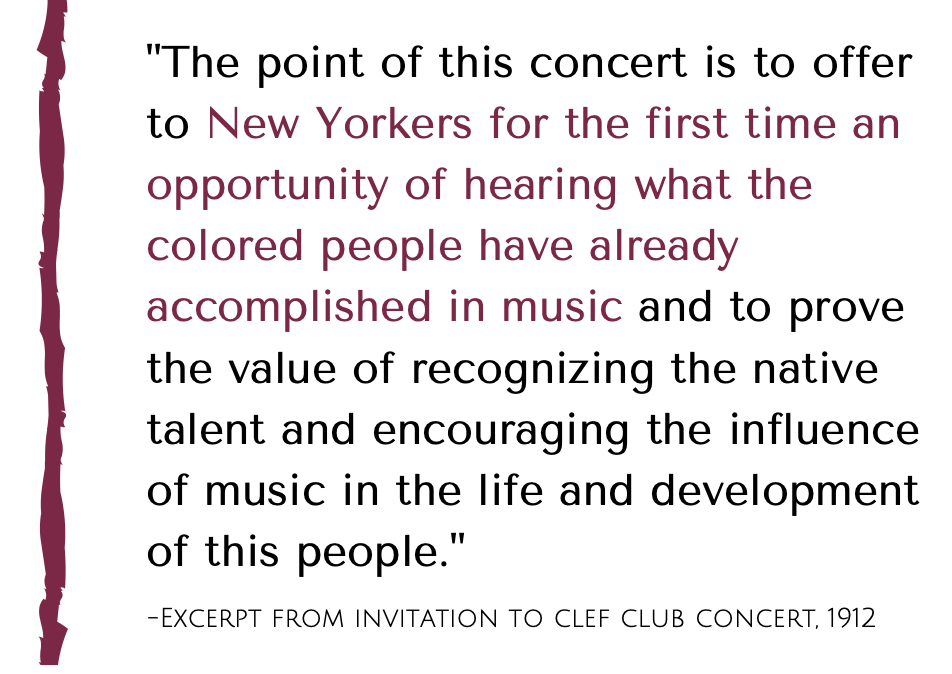
May 3, 1912. New-York Tribune May 3, 1912. The Sun
Through Europe’s work, countless doors opened for black musicians, and the barriers that kept them from advancing had been broken.
"People are not so apt to take us seriously. It is so hard to disassociate him in the minds of many people from the Jim Crow buffoonery role in which he is so often placed in literature as well in drama. The Negro is serious and often when he joyously sings, his heart is burdened with sorrow and longings for the opportunities and priviledges which he feels are his due, and I thank God for this movement."
-Major R.R. Moton of the Hampton Institute, 1913